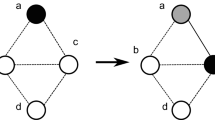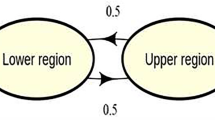Abstract
In this article, we discuss the structural and practical identifiability of a nested immuno-epidemiological model of arbovirus diseases, where host–vector transmission rate, host recovery, and disease-induced death rates are governed by the within-host immune system. We incorporate the newest ideas and the most up-to-date features of numerical methods to fit multi-scale models to multi-scale data. For an immunological model, we use Rift Valley Fever Virus (RVFV) time-series data obtained from livestock under laboratory experiments, and for an epidemiological model we incorporate a human compartment to the nested model and use the number of human RVFV cases reported by the CDC during the 2006–2007 Kenya outbreak. We show that the immunological model is not structurally identifiable for the measurements of time-series viremia concentrations in the host. Thus, we study the non-dimensionalized and scaled versions of the immunological model and prove that both are structurally globally identifiable. After fixing estimated parameter values for the immunological model derived from the scaled model, we develop a numerical method to fit observable RVFV epidemiological data to the nested model for the remaining parameter values of the multi-scale system. For the given (CDC) data set, Monte Carlo simulations indicate that only three parameters of the epidemiological model are practically identifiable when the immune model parameters are fixed. Alternatively, we fit the multi-scale data to the multi-scale model simultaneously. Monte Carlo simulations for the simultaneous fitting suggest that the parameters of the immunological model and the parameters of the immuno-epidemiological model are practically identifiable. We suggest that analytic approaches for studying the structural identifiability of nested models are a necessity, so that identifiable parameter combinations can be derived to reparameterize the nested model to obtain an identifiable one. This is a crucial step in developing multi-scale models which explain multi-scale data.





Similar content being viewed by others
Notes
CDC Rift Valley fever transmission, www.cdc.gov/vhf/rvf/transmission/index.html.
References
Ackleh A (1999) Parameter identification in size-structured population models with nonlinear individual rates. Math Comput Model 30:81–92
Ackleh A, Banks HT, Deng K, Hu S (2005) Parameter estimation in a coupled system of nonlinear size-structured populations. Math Biosci Eng 2(2):289–315
Alizon S, Van Baalen M (2005) Emergence of a convex trade-off between transmission and virulence. Am Nat 165:E155–167
André JB, Ferdy JB, Godelle B (2003) Within-host parasite dynamics, emerging trade-off, and evolution of virulence with immune system. Evolution 57:1489–1497
Banks HT, Hu S, Thompson WC (2014) Modeling and inverse problems in the presence of uncertainty. CRC Press, Boca Raton
Bellu G, Saccomani MP, Audoly S, D’Angio L (2007) DAISY: a new software tool to test global identifiability of biological and physiological systems. Comput Methods Progr Biomed 88(1):52–61
Bird BH, Ksiazek TG, Nichol ST, Maclachlan J (2009) Rift Valley fever virus. JAVMA 234(7):883–893
Capaldi A, Behrend S, Smith J, Berman B, Wright J, Lloyd AL (2012) Parameter estimation and uncertainty quantification for an epidemic model. Math Biosci 9(3):553–576
CDC (2007) Rift Valley Fever Outbreak, Kenya, November 2006-January 2007. Morb Mortal Wkly Rep 56(4):73–76
Chris OT, Banga JR, Balsa-Canto E (2011) Structural identifiability of systems biology models: a critical comparison of methods. PloS One 6(11):e27755
Cintrn-Arias A, Banks HT, Capaldi A, Lloyd AL (2009) A sensitivity matrix based methodology for inverse problem formulation. J Inverse Ill Posed Prob 17(6):545–564
Cobelli C, DiStefano JJ (1980) Parameter and structural identifiability concepts and ambiguities: a critical review and analysis. Am J Physiol 239(1):R7–24
Eisenberg M, Robertson S, Tien J (2013) Identifiability and estimation of multiple transmission pathways in cholera and waterborne disease. JTB 324:84–102
Fischer EAJ, Boender GJ, Nodelijk G, de Koeijer AA, Van Roermund HJ (2013) The transmission potential of Rift Valley fever virus among livestock in the Netherlands: a modelling study. Vet Res 44(1):58
Gaff H, Hartley D, Leahy N (2007) A mathematical model of Rift Valley Fever. Electron J Differ Equ (EJDE) 2007(115):1–12
Gaff H, Burgess C, Jackson J, Niu T, Papelis Y, Hartley D (2011) Mathematical model to assess the relative effectiveness of Rift Valley Fever countermeasures. Int J Artif Life Res (IJALR) 2(2):1–18
Gilchrist MA, Sasaki A (2002) Modeling host-parasite coevolution: a nested approach based on mechanistic models. J Theor Biol 218(3):289–308
Gulbudak H, Cannataro V, Tuncer N, Martcheva M (2016) From ecology to evolution of Host and Vector-Borne pathogen in a structured immune-epidemiological model (in revision)
Jansen van Vuren P, Paweska JT (2009) Laboratory safe detection of nucleocapsid protein of Rift Valley fever virus in human and animal specimens by a sandwich ELISA. J Virol Methods 157:15–24
Lele SR, Nadeem K, Schmuland B (2010) Estimability and likelihood inference for generalized linear mixed models using data cloning. J Am Stat Assoc 105:16171625. doi:10.1198/jasa.2010.tm09757
Ljung L, Glad T (1994) On the global identifiability of arbitrary model parametrizations. Automotica 30:265–276
Manore C, Beechler BR (2013) Inter-epidemic and between-season persistence of Rift Valley Fever: vertical transmission or cryptic cycling? Transbound Emerg Dis 62:1–11
Martcheva M (2015) An introduction to mathematical epidemiology. Springer, New York
McMeniman CJ, Lane RV, Cass BN, Fong AW, Sidhu M, Wang YF, O’Neill SL (2009) Stable introduction of a life-shortening Wolbachia infection into the mosquito Aedes aegypti. Science 323:141–144. doi:10.1126/science.1165326
Meshkat N, Eisenberg M, DiStefano J III (2009) An algorithm for finding globally identifiable parameter combinations of nonlinear ODE models using Grbner Bases. Math Biosci 222:61–72
Miao H, Xia X, Perelson AS, Wu H (2011) On identifiability of nonlinear ODE models and applications in viral dynamics. SIAM Rev 53(1):3–39
Mohtashemi M, Levins R (2001) Transient dynamics and early diagnostics in infectious disease. J Math Biol 470:446470
Mpeshe SC, Haario H, Tchuenche JM (2011) A mathematical model of Rift Valley fever with human host. Acta Biotheor 59(3–4):231–250
Munyua P, Murithi RM, Wainwright S, Githinji J, Hightower A, Mutonga D, Macharia J, Ithondeka PM, Musaa J, Breiman RF, Bloland P, Njenga MK (2010) Rift Valley fever outbreak in livestock in Kenya 2006–2007. Am J Trop Med Hyg. doi:10.4269/ajtmh.2010.09-0292
Niu T, Gaff HD, Papelis YE, Hartley DM (2012) An epidemiological model of Rift Valley fever with spatial dynamics. Comput Math Methods Med 2012:138757. doi:10.1155/2012/138757
Perasso A, Laroche B, Chitour Y, Touzeau S (2011) Identifiability analysis of an epidemiological model in a structured population. J Math Anal Appl 374(1):154–165
Perasso A, Razafison U (2016) Identifiability problem for recovering the mortality rate in an age-structured population dynamics model. Inverse Probl Sci En 20(4):711–728
Petersen B, Gernaey K, Vanrolleghem PA (2001) Practical identifiability of model parameters by combined respirometric–titrimetric measurements. Water Sci Technol 43(7):347–355
Pohjanpalo H (1978) System identifiability based on power-series expansion of solution. Math Biosci 41:21–33
Rolin AI, Berrang-Ford L, Kulkarni MA (2013) The risk of Rift Valley fever virus introduction and establishment in the United States and European Union. Emerg Microbes Infect 2(12):e81
van der Vaart AW (1998) Asymptotic statistics. Cambridge University Press, Cambridge
Watson D (1992) Biological half-life of ovine antibody in neonatal lambs and adult sheep following passive immunization. Vet Immunol Immunopathol 30:221–232
Xiao Y, Beier JC, Cantrell RS, Cosner C, DeAngelis DL, Ruan S (2015) Modelling the effects of seasonality and socioeconomic impact on the transmission of Rift Valley Fever Virus. PLoS Negl Trop Dis 9(1):e3388
Acknowledgments
The authors N. Tuncer and M. Martcheva acknowledge support from the National Science Foundation (NSF) under Grants DMS-1515661/DMS-1515442. Authors H. Gulbudak and V. Cannataro would also like to acknowledge partial support from IGERT Grant NSF DGE-0801544 in the Quantitative Spatial Ecology, Evolution and Environment Program at the University of Florida. We would like to thank the reviewers for their constructive comments which lead to the improvement of the paper.
Author information
Authors and Affiliations
Corresponding author
Rights and permissions
About this article
Cite this article
Tuncer, N., Gulbudak, H., Cannataro, V.L. et al. Structural and Practical Identifiability Issues of Immuno-Epidemiological Vector–Host Models with Application to Rift Valley Fever. Bull Math Biol 78, 1796–1827 (2016). https://doi.org/10.1007/s11538-016-0200-2
Received:
Accepted:
Published:
Issue Date:
DOI: https://doi.org/10.1007/s11538-016-0200-2
Keywords
- Immuno-epidemiological modeling
- Rift Valley fever
- Structural and practical identifiability analysis
- Parameter estimation
- Arbovirus diseases
- Immune dynamics




